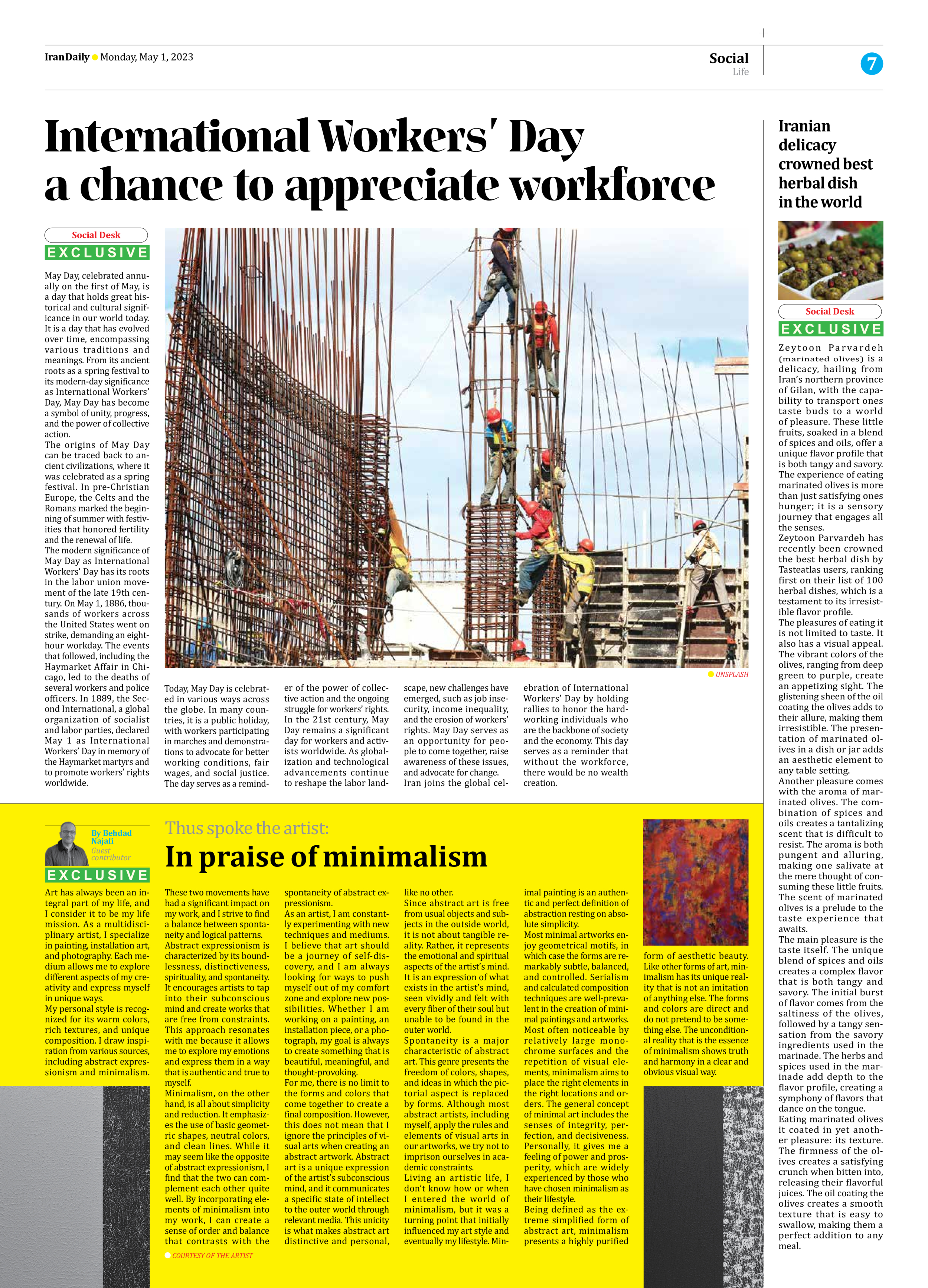
Thus spoke the artist:
In praise of minimalism
By Behdad Najafi
Guest contributor
Art has always been an integral part of my life, and I consider it to be my life mission. As a multidisciplinary artist, I specialize in painting, installation art, and photography. Each medium allows me to explore different aspects of my creativity and express myself in unique ways.
My personal style is recognized for its warm colors, rich textures, and unique composition. I draw inspiration from various sources, including abstract expressionism and minimalism. These two movements have had a significant impact on my work, and I strive to find a balance between spontaneity and logical patterns.
Abstract expressionism is characterized by its boundlessness, distinctiveness, spirituality, and spontaneity. It encourages artists to tap into their subconscious mind and create works that are free from constraints. This approach resonates with me because it allows me to explore my emotions and express them in a way that is authentic and true to myself.
Minimalism, on the other hand, is all about simplicity and reduction. It emphasizes the use of basic geometric shapes, neutral colors, and clean lines. While it may seem like the opposite of abstract expressionism, I find that the two can complement each other quite well. By incorporating elements of minimalism into my work, I can create a sense of order and balance that contrasts with the spontaneity of abstract expressionism.
As an artist, I am constantly experimenting with new techniques and mediums. I believe that art should be a journey of self-discovery, and I am always looking for ways to push myself out of my comfort zone and explore new possibilities. Whether I am working on a painting, an installation piece, or a photograph, my goal is always to create something that is beautiful, meaningful, and thought-provoking.
For me, there is no limit to the forms and colors that come together to create a final composition. However, this does not mean that I ignore the principles of visual arts when creating an abstract artwork. Abstract art is a unique expression of the artist’s subconscious mind, and it communicates a specific state of intellect to the outer world through relevant media. This unicity is what makes abstract art distinctive and personal, like no other.
Since abstract art is free from usual objects and subjects in the outside world, it is not about tangible reality. Rather, it represents the emotional and spiritual aspects of the artist’s mind. It is an expression of what exists in the artist’s mind, seen vividly and felt with every fiber of their soul but unable to be found in the outer world.
Spontaneity is a major characteristic of abstract art. This genre presents the freedom of colors, shapes, and ideas in which the pictorial aspect is replaced by forms. Although most abstract artists, including myself, apply the rules and elements of visual arts in our artworks, we try not to imprison ourselves in academic constraints.
Living an artistic life, I don’t know how or when I entered the world of minimalism, but it was a turning point that initially influenced my art style and eventually my lifestyle. Minimal painting is an authentic and perfect definition of abstraction resting on absolute simplicity.
Most minimal artworks enjoy geometrical motifs, in which case the forms are remarkably subtle, balanced, and controlled. Serialism and calculated composition techniques are well-prevalent in the creation of minimal paintings and artworks.
Most often noticeable by relatively large monochrome surfaces and the repetition of visual elements, minimalism aims to place the right elements in the right locations and orders. The general concept of minimal art includes the senses of integrity, perfection, and decisiveness. Personally, it gives me a feeling of power and prosperity, which are widely experienced by those who have chosen minimalism as their lifestyle.
Being defined as the extreme simplified form of abstract art, minimalism presents a highly purified form of aesthetic beauty. Like other forms of art, minimalism has its unique reality that is not an imitation of anything else. The forms and colors are direct and do not pretend to be something else. The unconditional reality that is the essence of minimalism shows truth and harmony in a clear and obvious visual way.







